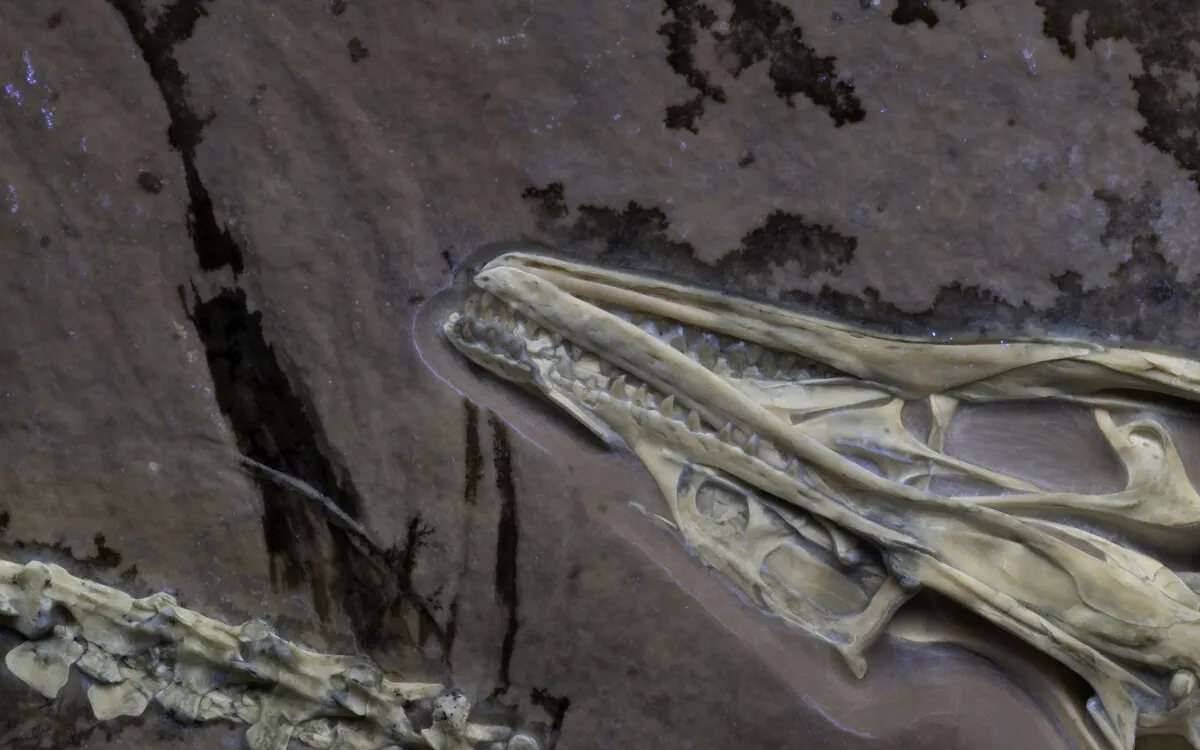
Archaeopteryx stands as a monumental fossil in the history of paleontology, serving as the crucial link that supports Charles Darwin's theory of evolution. Recognized as the oldest known fossil bird, it confirms that all birds, including contemporary species, are descendants of dinosaurs. Despite the first discovery of an Archaeopteryx fossil occurring over 160 years ago, scientists continue to unearth new insights into this remarkable creature. A recent study published in the journal Nature introduces the Chicago Archaeopteryx, a newly documented specimen that made its debut at the Field Museum in 2024.
The Chicago Archaeopteryx is notable for its astonishing preservation, showcasing an unprecedented amount of soft tissue and intricate skeletal details. This specimen reveals a unique set of feathers, previously unseen in this species, which may explain its ability to fly—an ability not shared by many of its non-avian dinosaur relatives. Like all Archaeopteryx fossils, this specimen was excavated from the famed limestone deposits near Solnhofen, Germany. Discovered by a private fossil collector before 1990, it remained in private ownership until a coalition of supporters facilitated its acquisition by the Field Museum, where it arrived in August 2022.
Jingmai O'Connor, the Field Museum's associate curator of fossil reptiles and the lead author of the study, expressed her excitement about the discovery, stating, "When we first got our Archaeopteryx, I was like, this is very, very, very cool." Despite its long history, this specimen has proven to yield a wealth of new information, from its snout to its tail. The Chicago Archaeopteryx is particularly significant as it is the smallest known specimen, roughly the size of a pigeon, with delicate, hollow bones embedded in a hard limestone matrix.
O'Connor emphasized the challenges faced during preparation, explaining that the small fossil's fragility required a careful approach. "When you have such a delicate fossil, you can't completely remove it from the surrounding rock matrix," she stated. A dedicated team, led by chief fossil preparator Akiko Shinya, spent over a year meticulously chipping away at the rock covering the fossil. The intricate work required them to distinguish the fossil from the surrounding matrix, as the preserved bones and tissues closely resembled the limestone's color.
To enhance their understanding of the fossil's structure, the team employed advanced CT scanning techniques. This technology, which uses a series of X-rays to create a detailed three-dimensional image, was instrumental in mapping the fossil's boundaries. O'Connor noted, "CT scanning was very important for our preparation process—it let us know things like the bone is exactly 3.2 millimeters below the surface of the rock." This marked the first instance of a complete Archaeopteryx undergoing CT scanning, with the data now accessible to the scientific community.
The preparation team also utilized UV light to reveal the fossil's skeleton and soft tissues, such as scales on the toes. O'Connor explained that previous research indicated a unique chemical composition in Solnhofen fossils that causes soft tissues to fluoresce under UV light. This innovative approach ensured that the team preserved as much of the delicate soft tissues as possible during the preparation process.
The research team concentrated on three primary areas of interest: the head, hands and feet, and wing feathers of the Chicago Archaeopteryx. The fossil's bones in the roof of the mouth provide valuable insights into the evolution of cranial kinesis, a crucial adaptation in modern birds that allows the beak to move independently from the skull. While this may seem trivial, it holds significant importance for ornithologists, as it suggests that specialized skull structures may have contributed to the evolution of over 11,000 bird species today.
Additionally, the preserved soft tissues in the specimen's hands and feet support the theory that Archaeopteryx spent considerable time on the ground and could potentially climb trees. The wing feathers also contribute to ongoing debates regarding the origins of flight among dinosaurs. O'Connor pointed out that while Archaeopteryx is not the first feathered dinosaur, it is believed to be the earliest known species capable of flight. "Our specimen is the first Archaeopteryx that was preserved and prepared in such a way that we can see its long tertial feathers," she said.
The long tertial feathers on the upper arm of the Chicago Archaeopteryx are particularly fascinating. O'Connor explained that compared to most modern birds, this specimen possesses a notably long upper arm bone. "If you're trying to fly, having a long upper arm bone can create a gap between the long primary and secondary feathers of the wing and the rest of your body," she noted. This gap can disrupt lift, making flight challenging. Modern birds have evolved shorter upper arm bones and tertial feathers to fill that gap, indicating that Archaeopteryx was indeed capable of flight, unlike its non-avian dinosaur relatives.
O'Connor concluded by expressing her enthusiasm for the future of research on the Chicago Archaeopteryx. "We're learning something exciting and new from just about every part of the body that we have preserved," she remarked. "This paper is really just the tip of the iceberg." The collaborative study involved contributions from experts such as Alex Clark, Pei-Chen Kuo, Yosef Kiat, Matteo Fabbri, Akiko Shinya, Constance Van Beek, Jing Lu, Min Wang, and Han Hu, underscoring the significance of this remarkable fossil in understanding the evolution of flight and the origins of modern birds.